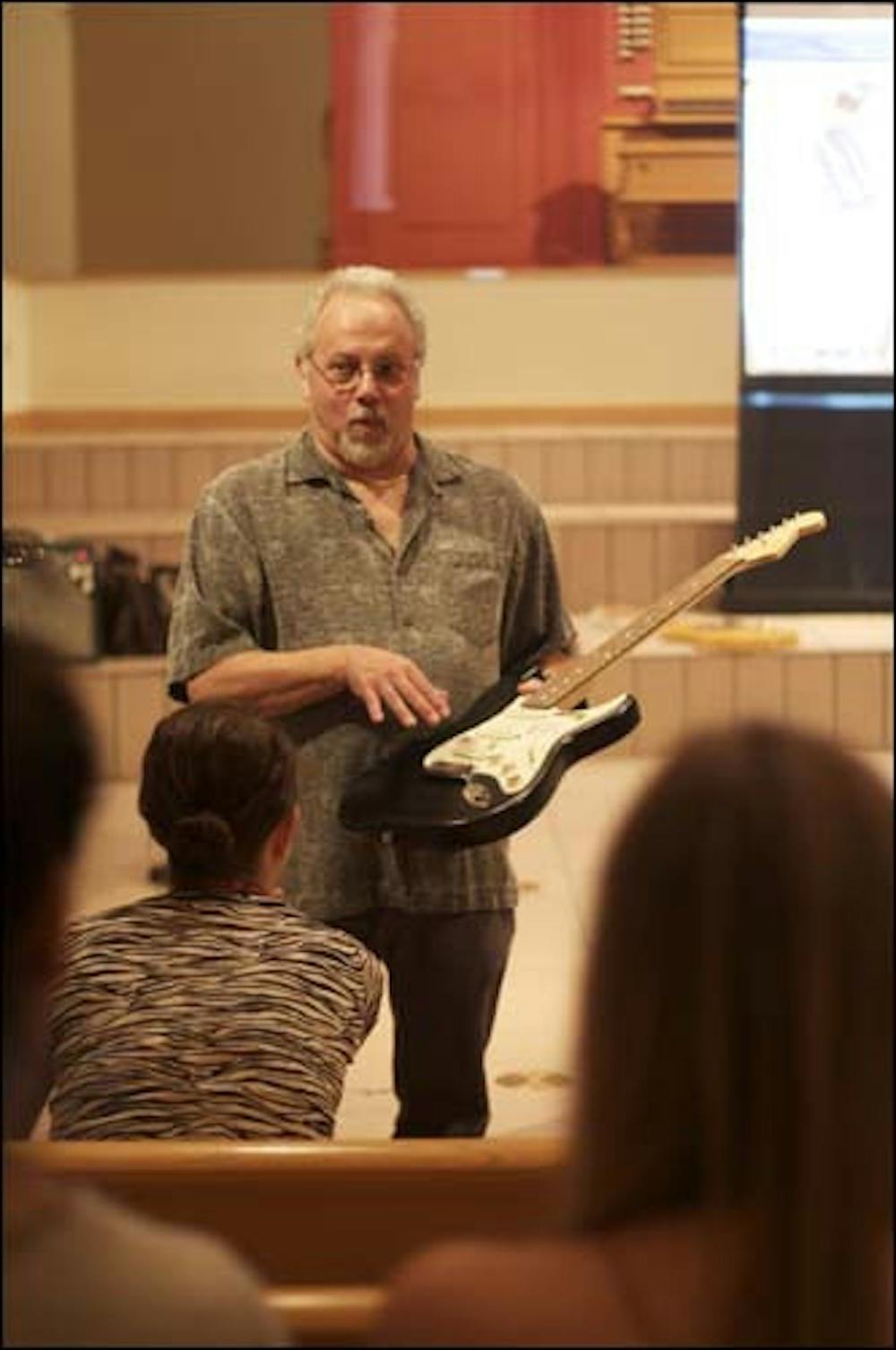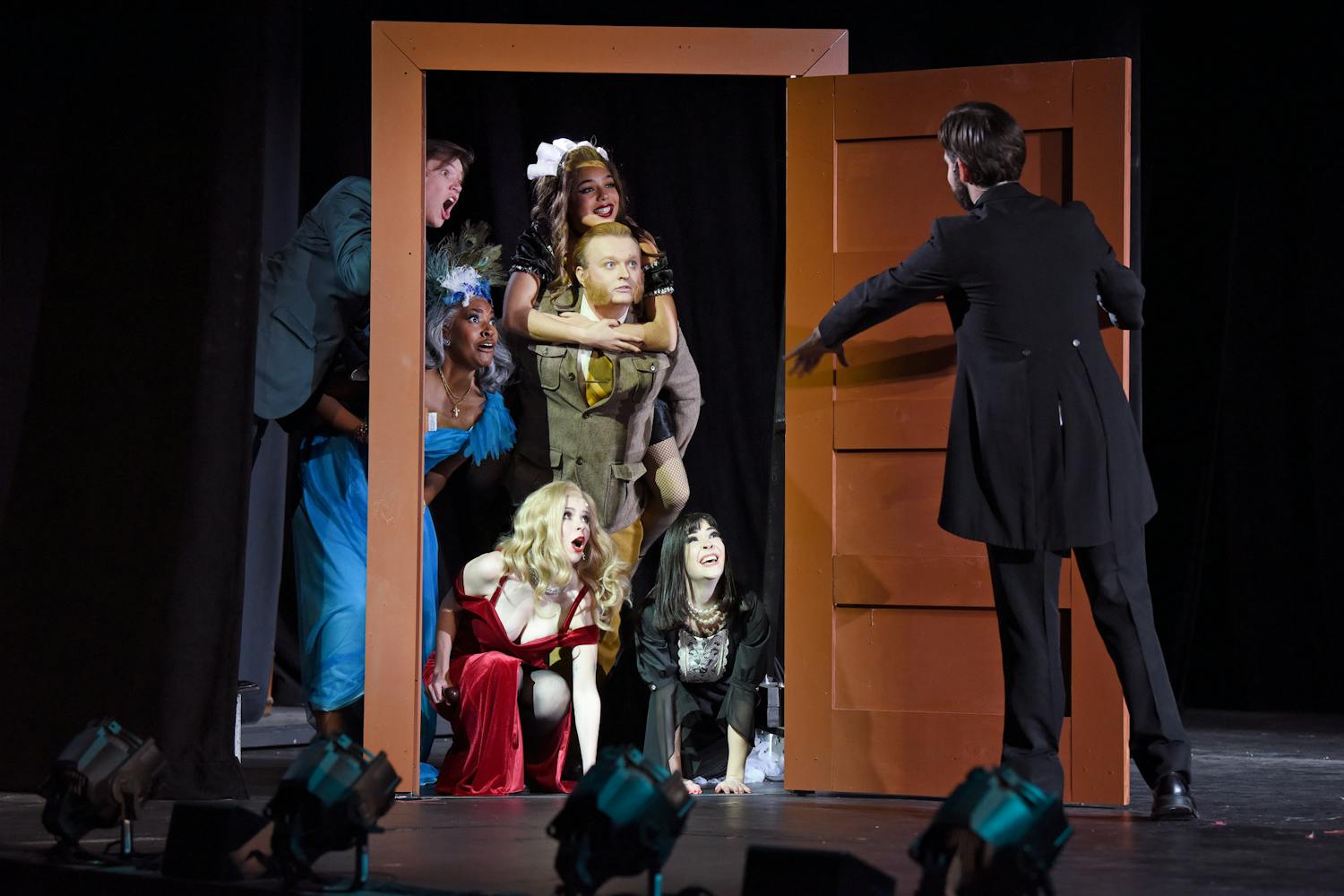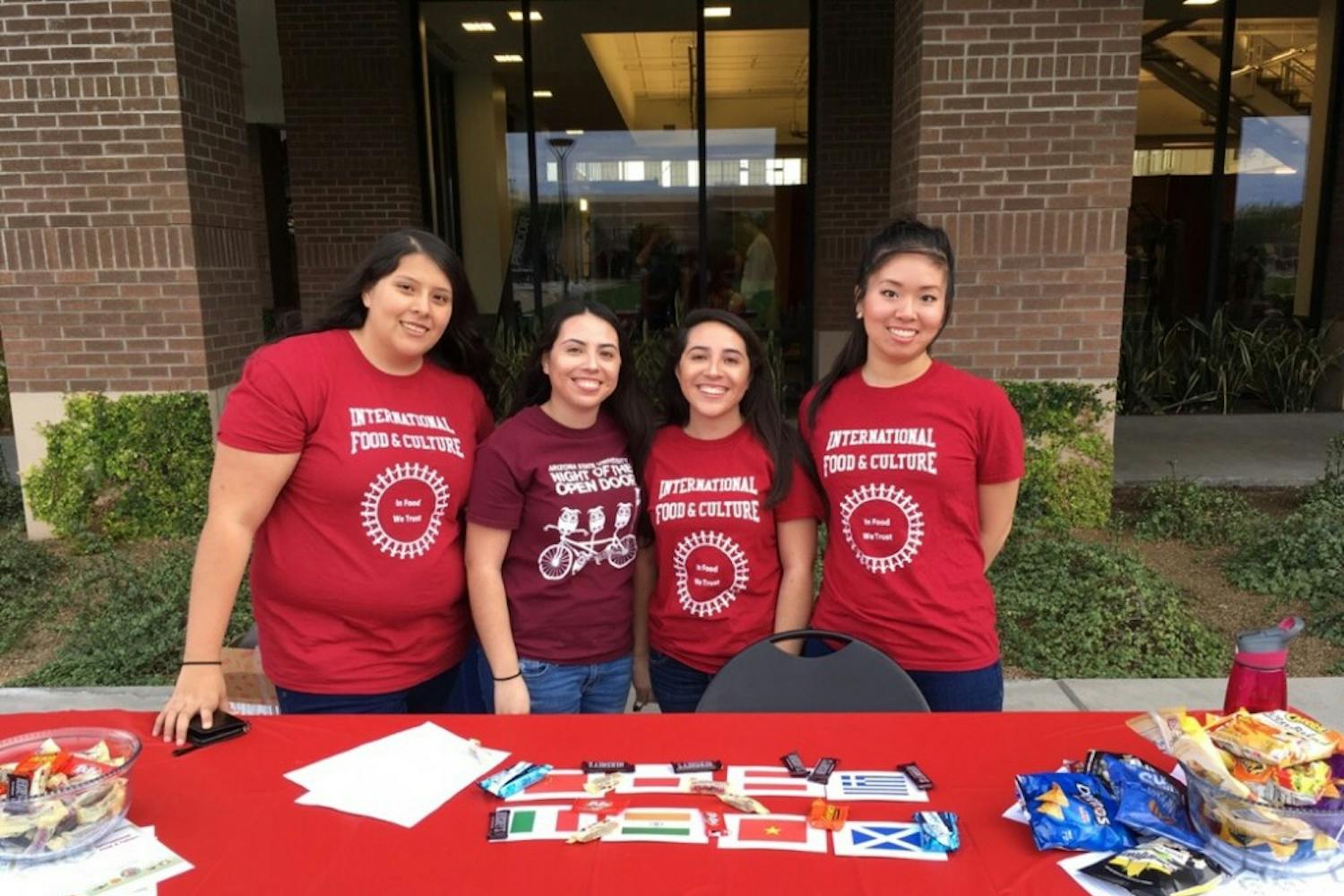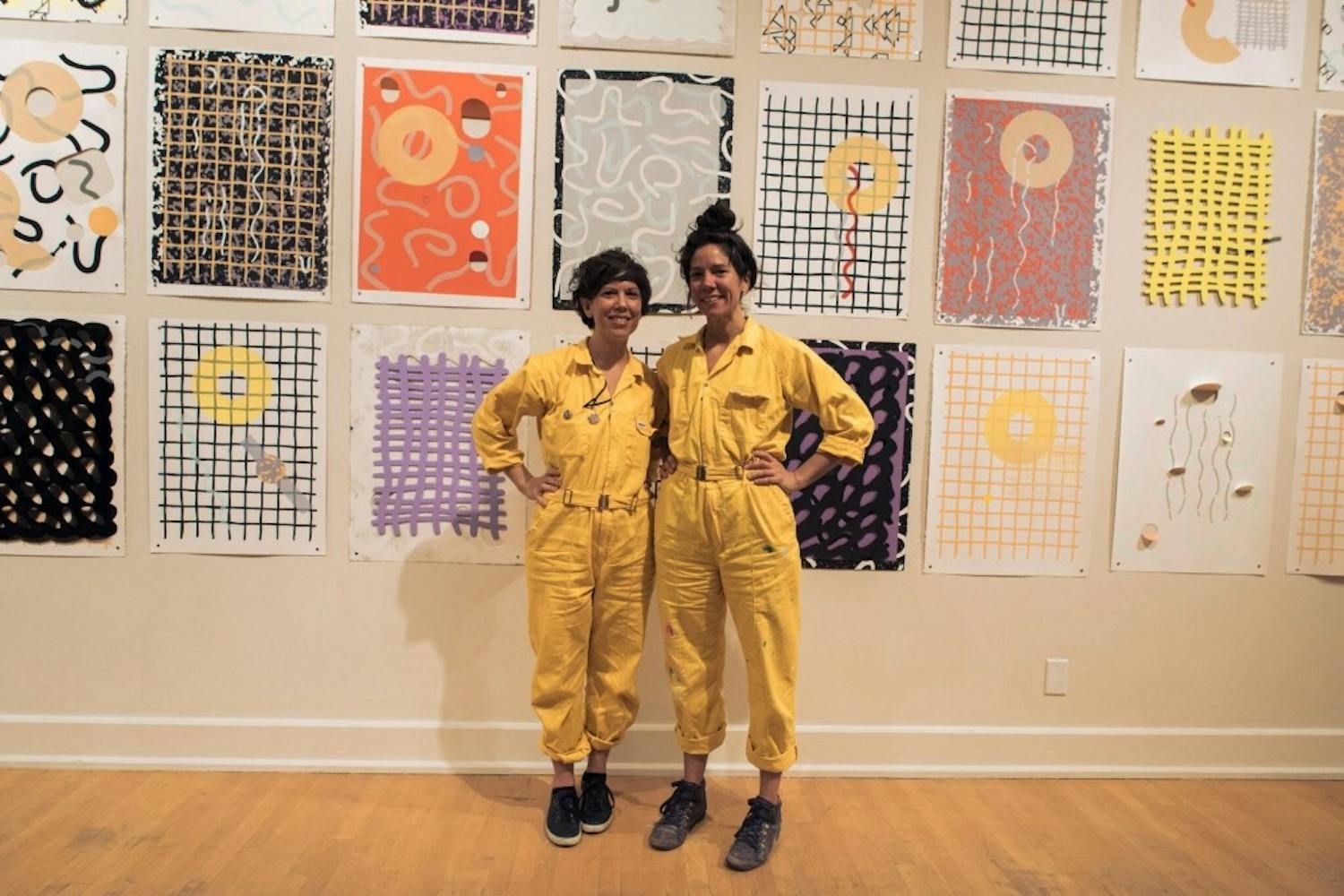Every aspect of the electric guitar can be explained through physics, a principal engineer for Fender Musical Instruments Corporation said Thursday in a guest lecture.
Fender Principal Engineer Tim Shaw flew from Nashville, Tenn., to give a presentation about the physics application to the design of electric guitars on Thursday for a class that gives students credit for the ASU Experience, or ASU 101.
“Electric guitars are systems,” Shaw said. “They’re the result of a complex interaction of their components.”
A selection of four classes is offered as an 11-credit “academic success cluster,” said lead instructor Robert Culbertson. The classes include the one-credit class similar to ASU 101 that Shaw attended, introduction to physics, first-year composition and college mathematics.
The cluster is geared toward first-semester education majors and each class is focused on the topic of the design and construction of musical instruments in order to provide an alternative to the traditional courses, said Culbertson, a physics professor.
“A lot of students have a fear of science and math,” Culbertson said.
“Rather than take a traditional approach, I wanted to put science and math together in a context that is easier for some students to relate to.”
During the lecture, Shaw said the design of electric guitar bodies, necks, pickups and hardware can create different sounds and the sustainability of those sounds.
When we create guitars, it needs to have “a sound we can use at the volume we need and we have to want to play it,” he said.
Shaw said he was excited to speak with students and the presentation went well, even though he had a small amount of time to talk about a great amount of information.
“Anything that explains the sciences or gets people involved in the sciences is a good thing,” he said. “If you can use music as a lever to get students into that world, that’s great.”
Applying science to music was helpful to him academically and he hopes the 10 students he spoke with were able to get a better understanding, he said.
“If I closed a circle for them and gave them a real-world application, then I think they’ll get something out of it,” Shaw said.
Elementary education freshman Chloe Viton said she enjoyed the lecture, especially since she is a music minor who owns a Fender, plays the guitar, piano and sings.
“I was really excited when I found out Fender was coming,” she said. “It really followed a lot of what we’re learning in physics.”
Viton said she decided to take the class cluster not only because she is an education major and it offered a nice schedule, but because of her interest in music.
“All of our classes revolve around music,” Viton said, adding that in her physics class she builds instruments and in her English class she is currently writing a reflection on a concert she attended.
This is the second year this class cluster has been available to students, said Culbertson, who has been interested in music since he started playing the guitar as a teenager.
“The connection between physics and music has always been fascinating to me,” he said. “These are teachers and I want some of them to take these skills into their own class someday.”
Reach the reporter at slsnyder@asu.edu.




